In Defense Of Spiders
17:33 minutes
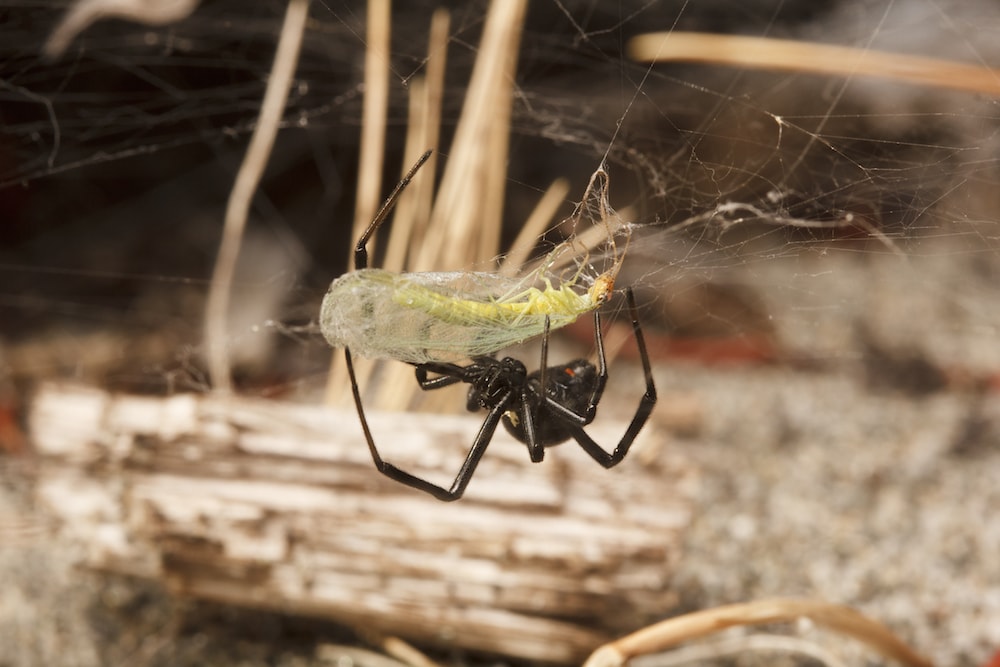
You wouldn’t know it now, but spider researcher Catherine Scott of the University of Toronto used to be petrified of spiders. The same goes for Raleigh entomologist Eleanor Spicer Rice, whose forthcoming book on our arachnid friends will be out this winter.
[Let’s get up close and personal with the misunderstood common spider.]
What changed their minds? Learning more about the weird, wonderful behaviors of our eight-legged friends. For example, a spitting spider hunts by throwing a mass of sticky web material mixed with venom. And a cellar spider defends itself from threats by spinning so fast it cannot be seen.
The two talk with Ira about their citizen science project, Recluse or Not?, aimed at identifying the spiders people have seen in their homes. Hint: It’s very often NOT a recluse. Plus, why recluses are less scary than you think, and why you might want to consider turning your spider fear…into spider love.
Just look at these little buddies:
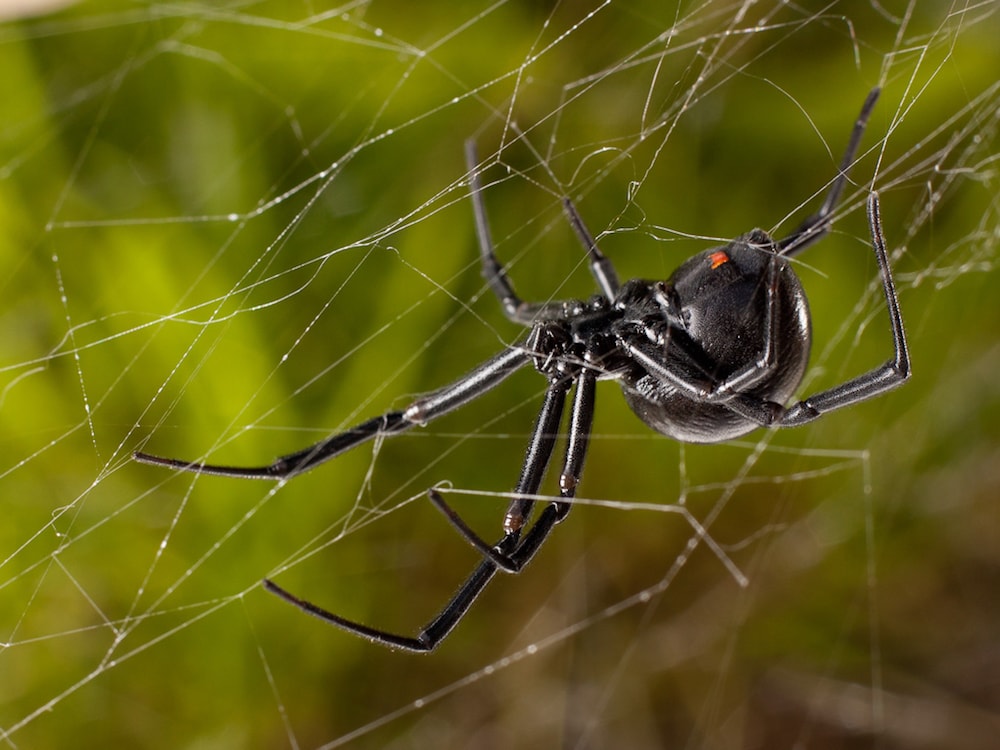
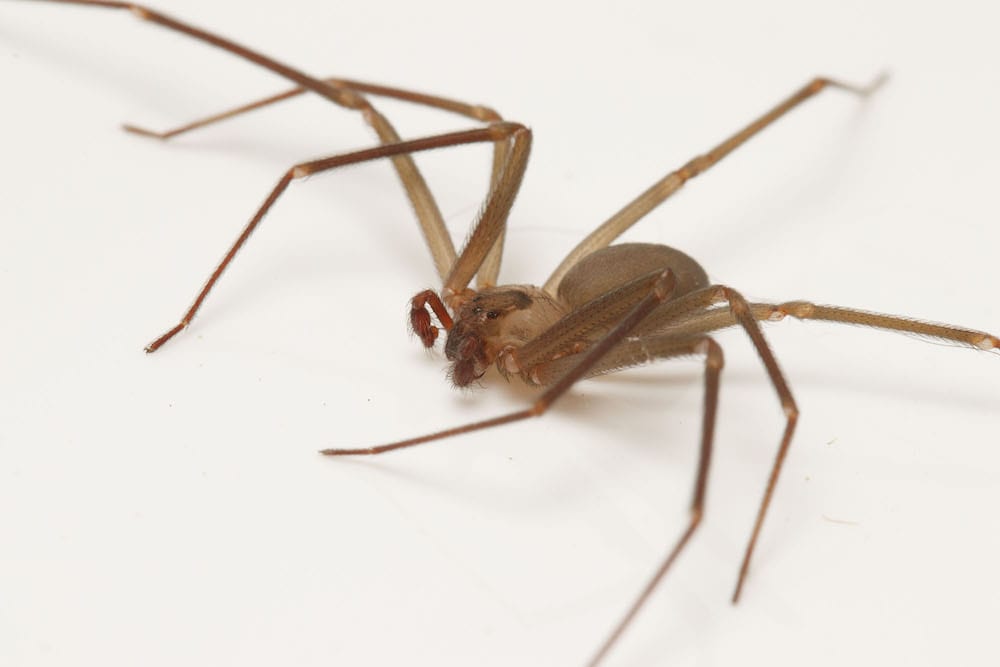
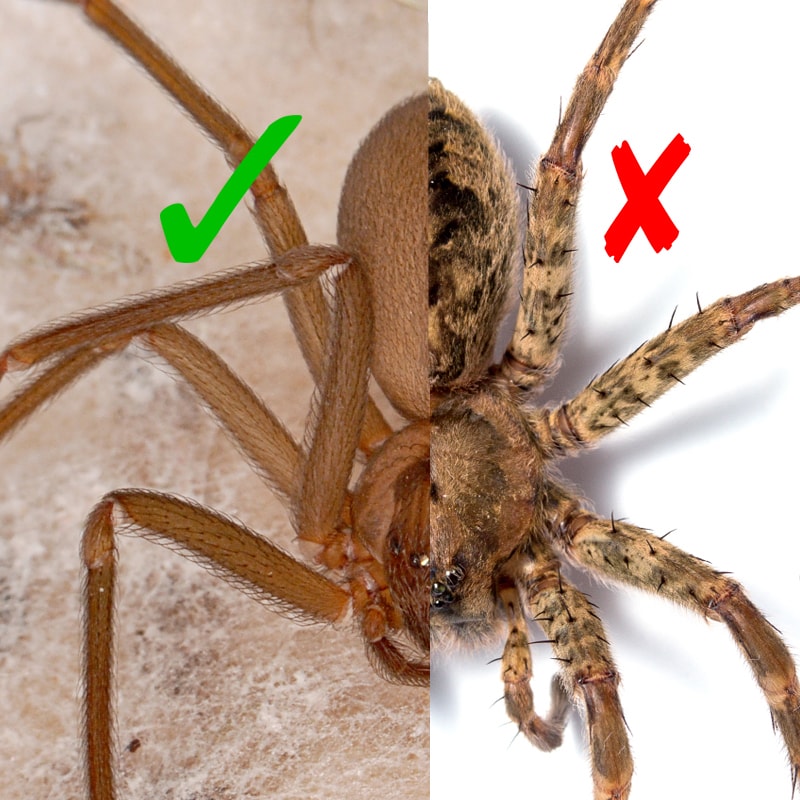
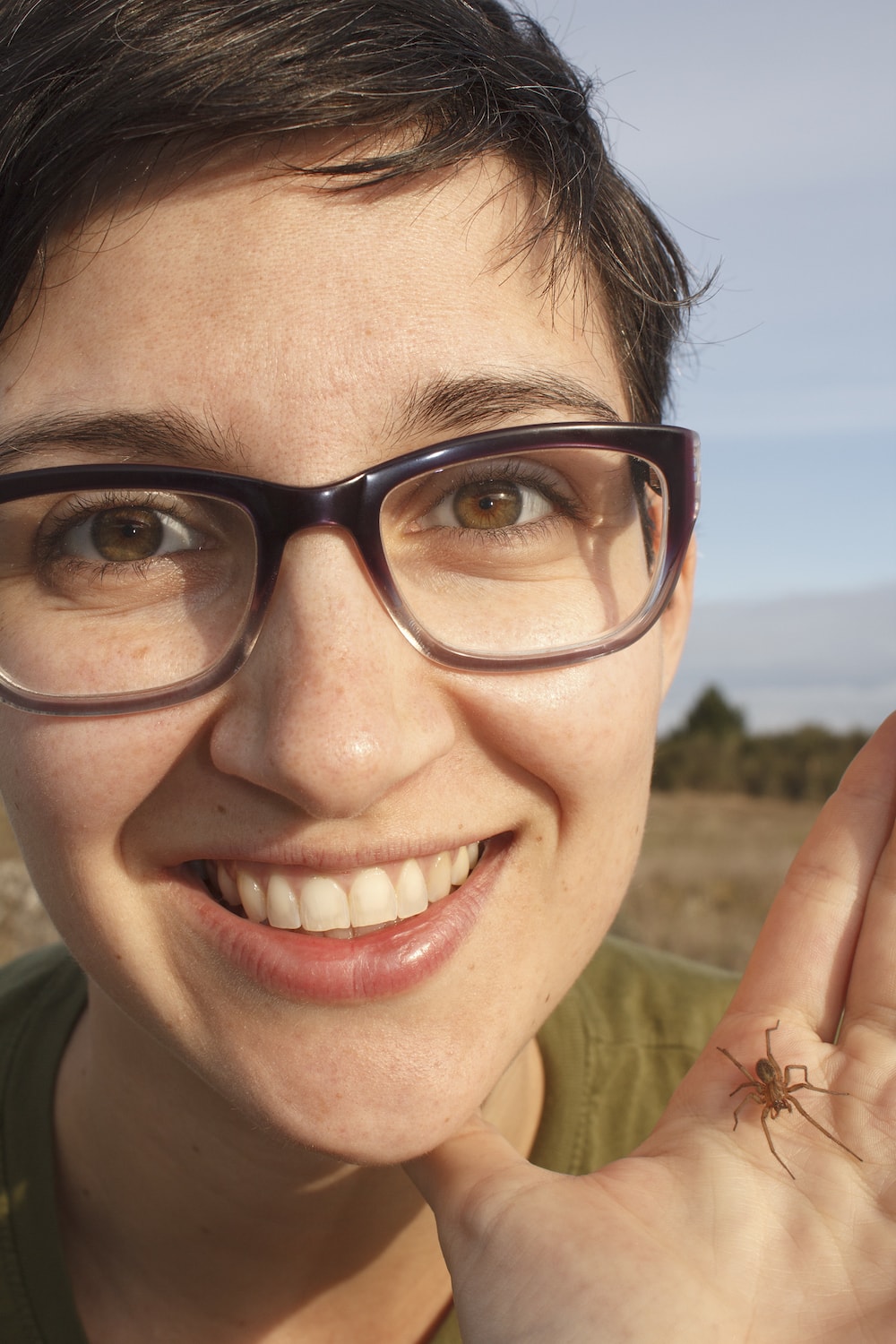
Can’t get enough of these lovable spiders? Here are more photos from the marvelous, misunderstood lives of the common spider.
Catherine Scott is an arachnologist and PhD student at the University of Toronto in Toronto, Canada.
Eleanor Spicer Rice is an entomologist and co-author of Dr. Eleanor’s Book of Common Spiders (University of Chicago Press, 2018). She’s based in Durham, North Carolina.
IRA FLATOW: You’re listening to Science Friday. I’m Ira Flatow. We have one last comforting thought for you this Halloween. Unless you live in Antarctica, you’re almost never more than four feet away from a spider. There’s probably a spider in the same room as you are right now. And yes, there are even spiders in the Arctic.
This is a scary thought for people with arachnophobia. But even the most ardent spider fan might feel at least a hint of nervousness if they saw a black widow, or the notorious brown recluse, whose bite sometimes leaves gruesome marks on the skin. But my next guests want you to feel less afraid of those brown recluses.
And if you are afraid of all spiders, they want you to feel better about that, too. Maybe you’ll even go looking for them to do your own spider science, whether it’s a cellar spider’s fast spinning defense mechanism, a spitting spider’s deadly blob of venom and web, or a crab spider’s expert color-changing camouflage.
Here to tell us why there’s nothing to fear, maybe a lot to love, are my guests, Eleanor Spicer Rice, an entomologist and author of the forthcoming book, Dr. Eleanor’s Book of Common Spiders. She’s based in Raleigh, South Carolina. Catherine Scott, an arachnologist, and PhD student at the University of Toronto. Welcome to Science Friday.
ELEANOR SPICER RICE: Thanks. Thanks for having us.
CATHERINE SCOTT: Hi. Thank you so much.
IRA FLATOW: You’re welcome. Have you both always loved spiders?
ELEANOR SPICER RICE: I–
CATHERINE SCOTT: No.
ELEANOR SPICER RICE: –have not always loved spiders. This is Eleanor.
IRA FLATOW: You both said no.
ELEANOR SPICER RICE: What about you, Katherine? Oh, we both said no.
CATHERINE SCOTT: Yeah. I used to be terrified of spiders until I was about 25 years old and started studying them. So, yeah. It’s definitely not a lifelong love. It’s something that I’ve learned recently– to love spiders.
IRA FLATOW: And how do you get over that fear?
CATHERINE SCOTT: So for me, the process of turning fear to fascination was relatively quickly, and it was just all about spending time with spiders, watching their behavior, and learning more about them. So I think the more you know, the more you understand spiders, and the less reason you have to fear them.
IRA FLATOW: Now, Catherine. I know you’re working on a citizen science project to help people identify whether they’ve got a brown recluse or not. Is this because recluses are so dangerous?
CATHERINE SCOTT: So they have this horrible reputation, especially in North America. People are terrified of brown recluses. They think that if you got bitten by a brown recluse your arm is going to rot off, you’re going to die, you’re going to have to get an amputation. And there’s a bit of hysteria around it that’s really way overblown relative to the real risk.
Brown recluse spiders rarely bite. And when they do, it’s only a very small proportion– like 10% of the bites– that are actually really serious. But those are the ones that people hear about on the media, and the gruesome wounds that you’ll see if you search “brown recluse bites” online. So there is a bias towards the really severe, really rare cases of brown recluse bites.
IRA FLATOW: Yeah, this reminds me when I was a kid, people talking about black widow spiders the same way.
CATHERINE SCOTT: Yeah, exactly. And black widows as well. I study them. I work with them every day. I handle them. So I spend a lot of time with them. I’ve never been bitten. So if you’re not going out looking for black widows, they have no interest in humans.
They’re actually really shy and secretive, just like recluse spiders. There’s a reason they’re called recluse spiders, because they are reclusive. And yeah, they have no interest in you. And the risk that they pose is really, really small.
ELEANOR SPICER RICE: Catherine actually tried to make black widows bite her for a project, and she couldn’t get them to bite her unless she squeezed them.
IRA FLATOW: Is that true?
CATHERINE SCOTT: So that wasn’t actually me. Sorry. But that was a really cool study that came out a couple years ago that I wrote about on my blog. So, yeah. A scientific study trying to make black widows bite by poking and prodding them, found that if you poke them and prod them, and just repeatedly harass them, they’re either going to run away because they’re much more afraid of us than we are of them, they’re going to play dead to try to get us to leave them alone, or they’ll fling sticky silk, which is their main defense.
It was only when the researchers squeezed them between silicone fingers that the spiders ever bit. And even then, only about 60% of the time would the black widows bite– when they were being squeezed, and had no other recourse. And at that point, they’re biting as a last ditch defense.
And then they also found that when the spiders did bite defensively, over half of those bites were dry. They didn’t actually inject any venom. So they can control whether or not they inject venom when they bite.
And it turns out that venom is really expensive, metabolically, for spiders to produce, and it’s for subduing prey. It’s not actually for defense, and it’s not very effective at defense. So they want to save up their venom for their next meal. And not waste it on biting.
IRA FLATOW: So let’s talk about your citizen science project about identifying the recluse. How do people participate?
ELEANOR SPICER RICE: So all you have to do is if you see a spider that you think is a brown recluse, you tweet it. You take a little picture of it, and tweet it to us at @recluseornot. And one of– either myself, or Catherine, or another arachnologist, Matt Bertone, will identify the spider for you and tell you if it’s a recluse or not. So then you can know that’s not here.
IRA FLATOW: And what are you learning about all these pictures that are being sent to you?
ELEANOR SPICER RICE: Well, one thing that we’re learning is that most people think that every single spider that they see in their house is a brown recluse, whether it looks like one or not. And a lot of people who don’t live anywhere near brown recluses think that they have brown recluses in their house.
So another thing that we’re learning, is that people who do live in areas where brown recluses live, can live in houses with tons and tons of recluses. And just peacefully, and not even realize that they are completely surrounded by lots of brown recluses.
IRA FLATOW: Here is a tweet from nasty pantsuit, who says, I love spiders. I live in Australia, and a brood of baby huntsman hatched in the house. Really cute.
CATHERINE SCOTT: Definitely.
IRA FLATOW: What are baby huntsman, for us who don’t know that?
CATHERINE SCOTT: So huntsman spiders, they’re also known as giant crab spiders, and we do have some huntsman in North America but only in the south. And yeah, they’re also fairly common in houses, and the babies are really cute.
Actually, one of the things that I love about spiders is a lot of them have parental care. The mothers will carry the babies around on their back. And wolf spiders, for instance, or in the social velvet spiders, mothers will actually regurgitate food for their babies just like bird parents do for their offspring. So yeah. Spiders take really good care of their babies.
IRA FLATOW: I mean, you two are just– we’re having a love fest about spiders here.
ELEANOR SPICER RICE: They’re pretty great.
IRA FLATOW: I mean, but why– Yeah, go ahead.
ELEANOR SPICER RICE: Oh, go ahead. I was just saying they don’t seem great at first. But really, if you just take a few minutes to stare at any spider that’s around you, you’ll realize they’re pretty awesome.
IRA FLATOW: I have to admit that I love spiders, too. I have–
ELEANOR SPICER RICE: Oh.
IRA FLATOW: Yeah.
ELEANOR SPICER RICE: Because you always loved spiders.
IRA FLATOW: Well, yeah. Because I figure if there are spiders in my house, there’s something they would like to eat. And it’s something I probably don’t like to have around is what they’re eating.
ELEANOR SPICER RICE: That’s true. That’s true. The spiders aren’t going to be living in your house unless they have something to eat. So they’re there doing something for you in your house.
And they do the same thing in agricultural fields. They found that if you take lynx spiders out of agricultural fields, the pest populations just skyrocket, because they’re there eating all of these pests without pesticides. They do tons of wonderful things just from eating.
IRA FLATOW: What kinds of things do they eat in my house?
ELEANOR SPICER RICE: In your house?
CATHERINE SCOTT: In the house?
IRA FLATOW: Yeah.
ELEANOR SPICER RICE: You can tell, Catherine.
CATHERINE SCOTT: OK. I mean they’re eating anything that is an insect, or even other spiders. So anything that’s sort of crawling on six to eight legs, spiders will eat it for sure.
And like Eleanor said, they’re excellent roommates. You already know, having spiders in your house, they earn their keep by eating the things that you don’t want around. Especially things like mosquitoes. And there’s actually one spider species which is– this isn’t its official name, but I like to call it the vampire spider.
It is a jumping spider that actually specializes on eating the mosquitoes that transmit malaria. It especially likes to eat the ones that have fed on human blood. So indirectly, it’s feeding on human blood. But it’s doing us a favor by eating those mosquitoes that would otherwise be transmitting diseases.
IRA FLATOW: You know, there are some people who are afraid of spiders, because they think that while they’re sleeping, and they’re snoring, or have their mouth open, a spider is going to crawl in, and they’re going to swallow.
ELEANOR SPICER RICE: Yes. But that doesn’t really actually happen. I don’t think a spider wants to be anywhere near your mouth.
CATHERINE SCOTT: No, that’s definitely a myth.
ELEANOR SPICER RICE: Unless you have little bugs crawling out of your mouth. Then you have other problems that we need to worry about.
IRA FLATOW: I’ve seen the movie.
CATHERINE SCOTT: Yeah. That’s a very popular misconception, that spiders want to go in your mouth. And yeah, that’s definitely a myth. And another one that goes along with that is that spiders crawl into your bed, and bite you in your sleep.
Again, like spiders have no reason to crawl into your bed to bite you. They’re interested in biting insects and other arthropods, not humans. They don’t feed on us, so they have absolutely no reason to bite us.
IRA FLATOW: One tweet comes in from Steve, who says– How can I tell the difference between a brown recluse and a wolf spider?
ELEANOR SPICER RICE: Well, that’s a great question. Because a lot of people think that their wolf spiders are brown recluses. But Catherine, do you want to give the features of the brown recluse?
CATHERINE SCOTT: Sure, yeah. So there’s a few things. So if you’ve got a recluse spider, it’s going to have a violin mark. But that’s not enough, because there are a lot of spiders that also have a violin pattern on them. So to tell that it’s not a brown recluse, that it’s a wolf spider for instance, it’s going to have eight eyes rather than six. Recluses only have six.
Most other spiders, including wolf spiders, also have big spikes, spines on their legs. Whereas brown recluses only have very, very fine hair. Recluses never have stripes on their legs, which a lot of other spiders do. Am I missing the last one, Eleanor?
ELEANOR SPICER RICE: Well, wolf spiders don’t usually have webs, but brown recluses also don’t have webs. So if you’re trying to tell the recluse from other spiders– that if you see a spider hanging out in a web that you think is a brown recluse, they don’t hang out in webs. They can build cobwebs, but they don’t really live in those webs.
CATHERINE SCOTT: Yeah. If it’s on an orb web, or a big, fixed, space-filling web, definitely not a brown recluse. And wolf spiders don’t build webs at all. They’re always running around.
ELEANOR SPICER RICE: Yeah, they’re always running around hunting for stuff.
IRA FLATOW: I’ve seen them in my basement. They’re big and hairy.
ELEANOR SPICER RICE: Lucky you.
IRA FLATOW: Big and hairy things.
CATHERINE SCOTT: Excellent roommates.
IRA FLATOW: Is that right?
ELEANOR SPICER RICE: They are.
IRA FLATOW: What do you say that?
ELEANOR SPICER RICE: They’re eating all of your pests.
CATHERINE SCOTT: They’re also really fun to watch. So wolf spiders, and also jumping spiders, which you’ll also find– if you go out on a sunny day and look at the wall of your house, or your fence, you’ll often see jumping spiders, and they’re super fun to watch because they’re visual hunters. Just like tiny, little cats. And they’ll pounce on their prey just like a cat. So if you can spend some time watching those visual predators. Oh, and they’re adorable.
ELEANOR SPICER RICE: They have big eyes.
CATHERINE SCOTT: Spiders can be really beautiful.
ELEANOR SPICER RICE: They look like they have little mustaches.
CATHERINE SCOTT: Yes. And if you’ve never seen a peacock spider, please go and Google “peacock spider” right now, because they’re the most beautiful animals in the world. Their abdomen looks like a peacock’s tail that’s rainbow-colored. And you can’t not start to like spiders a little bit once you’ve seen a peacock spider.
IRA FLATOW: I think we’re changing minds by the second on Science Friday from PRI, Public Radio International. Talking with Catherine Scott and Eleanor Spicer Rice, author of Dr. Eleanor’s Book of Common Spiders. We just have to talk about this because I know it’s talked about a lot, and that is spider sex. I’ve got some bizarre–
CATHERINE SCOTT: Of course. This is my favorite topic.
ELEANOR SPICER RICE: Me, too.
IRA FLATOW: Go for it.
ELEANOR SPICER RICE: Well, every spider can eat every other spider because they’re predators. So to keep each other from eating each other, they have developed some pretty crazy behaviors to tell each other that they’re mates. Can I just tell you one of my favorite ones that’s kind of creepy?
IRA FLATOW: Please, please.
ELEANOR SPICER RICE: OK. So there are these spiders called grass spiders. And you know how when you like look out in your lawn, and you see those sheet webs in-between your grass, with the little funnel on the end of it?
IRA FLATOW: Yeah, yeah.
ELEANOR SPICER RICE: Those are the grass spiders. And the male, what he does is he’ll go up to the web, and he’ll flex the sheet very gently. And then while he’s doing it, he waves his abdomen in the air very hypnotically, to do this like sexy dance on the web. And if the female looks like she’s interested, he’ll release a chemical and she’ll pass out cold. And then he’ll just jump on her and go for it. And then before she can wake up and eat him, he runs away. It’s my favorite. What about you, Catherine? What’s your favorite spider sex?
CATHERINE SCOTT: So, well, I really love black widows because they’re the species that I study. And I like this because it sort of helps people to understand that spiders have more in common with us than you might think. So black widows literally do web-based personal ads.
So the female black widow has a smell on her silk, on her web, that is an advertisement that provides males with information about her– where she is, whether she’s mated before, and even whether or not she’s hungry, which like Eleanor was saying, is really important. If the female is hungry, she poses a threat to the male when he enters her web. He might become a meal rather than a mate. So yeah. Spiders are great at using chemicals to communicate with one another, which most people probably don’t think about.
IRA FLATOW: Last question. It’s Halloween next week. And in that vein, there’s a kind of spider that is almost like kind of a vampire, Eleanor?
ELEANOR SPICER RICE: Oh, that’s the one that can eat mosquitoes. The big, fat, bloody-filled mosquitoes. But there are other Halloween-type spiders, too, because a lot of spiders wear Halloween costumes all year round. They mimic all kinds of different creatures. Catherine, do you want to tell some of your favorites?
CATHERINE SCOTT: Oh, sure. Yeah. So one of the coolest ones is spiders that mimic ants. So a lot of spiders have highly modified bodies, so you can barely tell that they’re a spider, not an ant. And they walk like an ant, they hang out with ants, so they look very similar to ants.
And then there are also other spiders that masquerade as inanimate objects, like bird poop, like twigs, and leaves, and flowers. And so they wear these costumes, so to speak, to either avoid predators– so by looking like an ant that’s well-defended and distasteful. Or by looking like a leaf, or bird poop, which doesn’t taste good. Or they can even look like a flower, for instance, in order to ambush insects that are coming to visit that flower for nectar.
IRA FLATOW: Now if I wanted to go to a Halloween party dressed up as a spider, what would you suggest I wear?
CATHERINE SCOTT: Oh. I would go for the black widow.
ELEANOR SPICER RICE: Would you really? I would go for a spinning spider, because–
CATHERINE SCOTT: Oh. yeah. They’re great.
ELEANOR SPICER RICE: Oh, they’re really great.
IRA FLATOW: What would I be wearing? What kind of costume? What would I put on?
ELEANOR SPICER RICE: Well, you could just go around and spit on people. They spit these death loogies on– they’re like scavengers. And they’re very common. They live all around us. I have them in my kitchen.
And they go up to their prey. And instead of jumping on them, they just spit these venomous death loogies on them, and tangle them down. It’s all sticky. And then they go up to this goopy thing and eat it. So you could just be the grossest spider.
IRA FLATOW: Well, I think you have solved that problem for us.
ELEANOR SPICER RICE: It wouldn’t make you the most popular person at the party, but it would certainly–
IRA FLATOW: Most original costume, I’ll bet.
ELEANOR SPICER RICE: –be very accurate. Yeah.
IRA FLATOW: And I think that is the most original costume I’ve ever had on Science Friday, in the 26 years I’ve been on the air. Thank you, both, for your fascinating– Eleanor Spicer Rice’s book is called Dr. Eleanor’s Book of Common Spiders. And she is based in Raleigh, South Carolina.
Catherine Scott is an arachnologist, and a PhD student at the University of Toronto. And if you ever wonder what spiders you’re seeing in your home, you can head over to sciencefriday.com/commonspiders to see pictures, learn facts, find out all about these spiders– sciencefriday.com/commonspiders.
Thank you both for taking time to be with us today.
CATHERINE SCOTT: Thank you so much for having us.
ELEANOR SPICER RICE: Thank you, it was fun.
IRA FLATOW: You’re welcome. One last thing before you go. All you Bay Area listeners, Annie Minoff and Elah Feder, the hosts of Undiscovered, our podcast, will be joining Mythbuster, Adam Savage, at the Bay Area Science Festival. That’s tomorrow night, October 28, at the Castro theater. Get your tickets at sciencefriday.com/bayarea. Tomorrow night at the Castro theater– sciencefriday.com/bayarea. Have a great weekend. I’m Ira Flatow in New York.
Copyright © 2017 Science Friday Initiative. All rights reserved. Science Friday transcripts are produced on a tight deadline by 3Play Media. Fidelity to the original aired/published audio or video file might vary, and text might be updated or amended in the future. For the authoritative record of Science Friday’s programming, please visit the original aired/published recording. For terms of use and more information, visit our policies pages at http://www.sciencefriday.com/about/policies/
Christie Taylor was a producer for Science Friday. Her days involved diligent research, too many phone calls for an introvert, and asking scientists if they have any audio of that narwhal heartbeat.